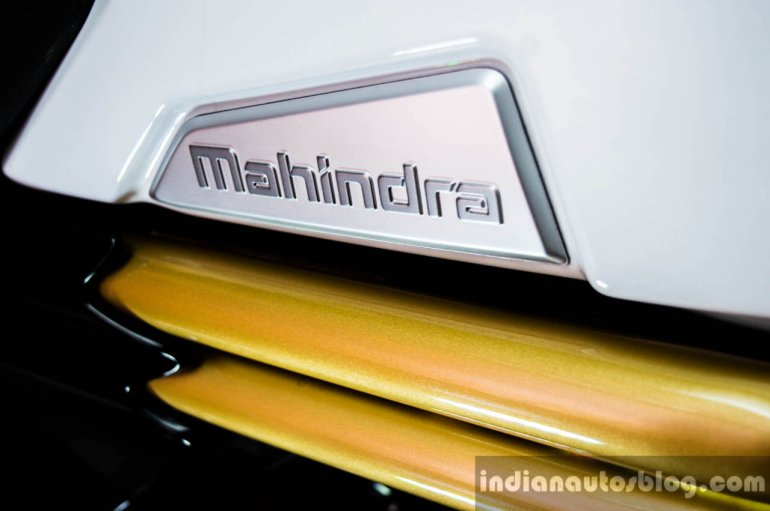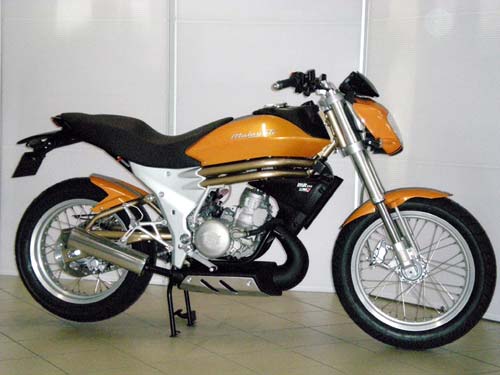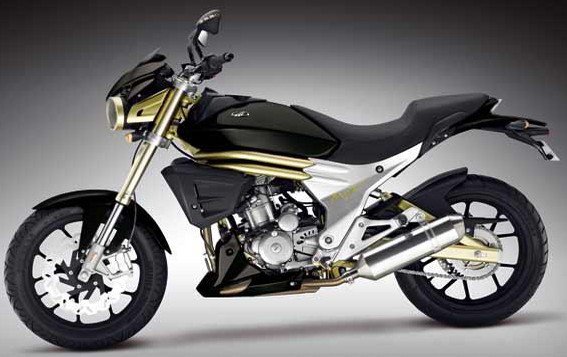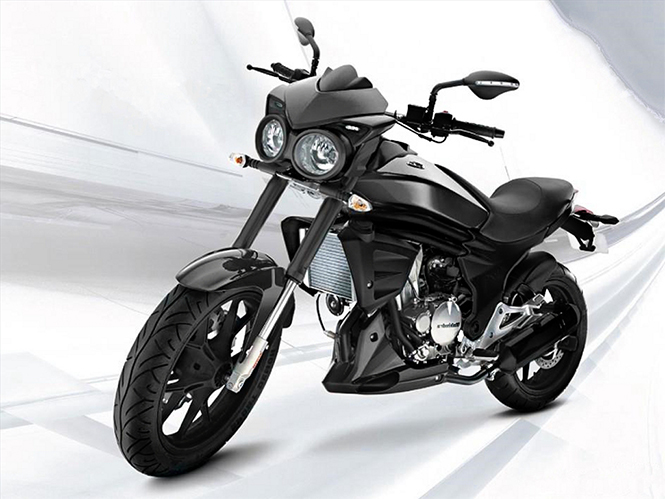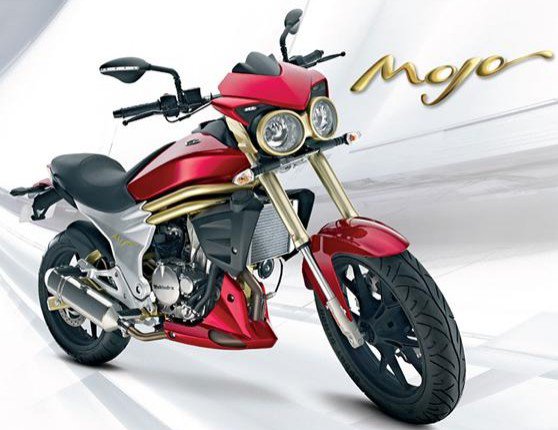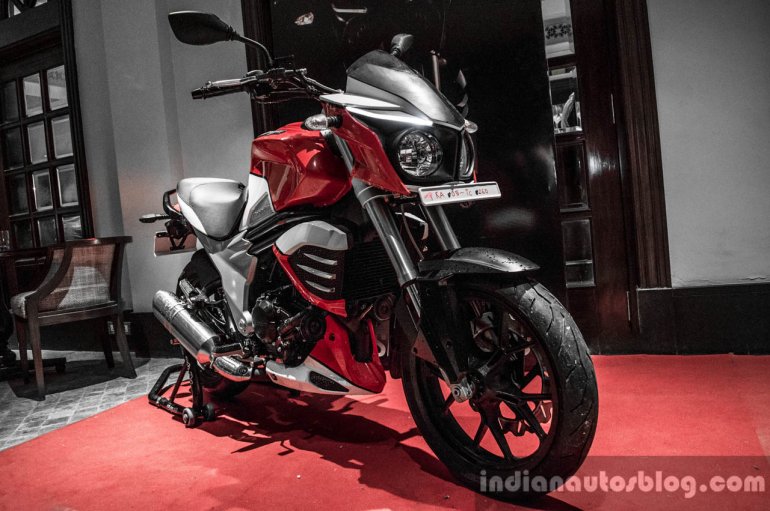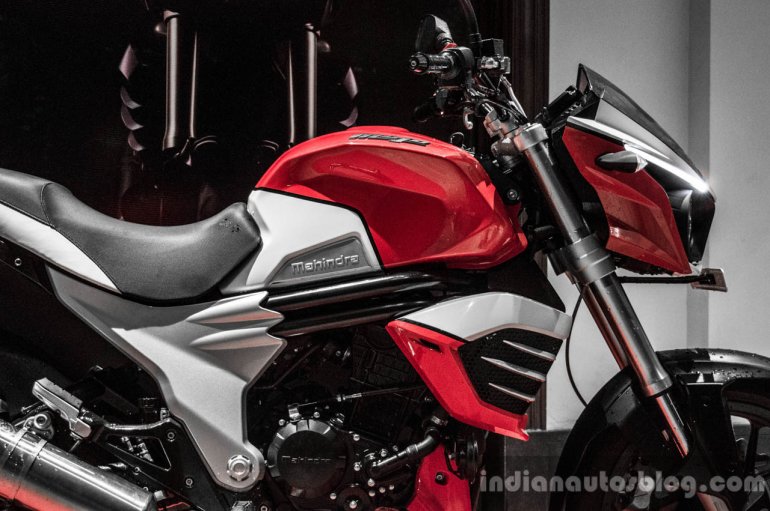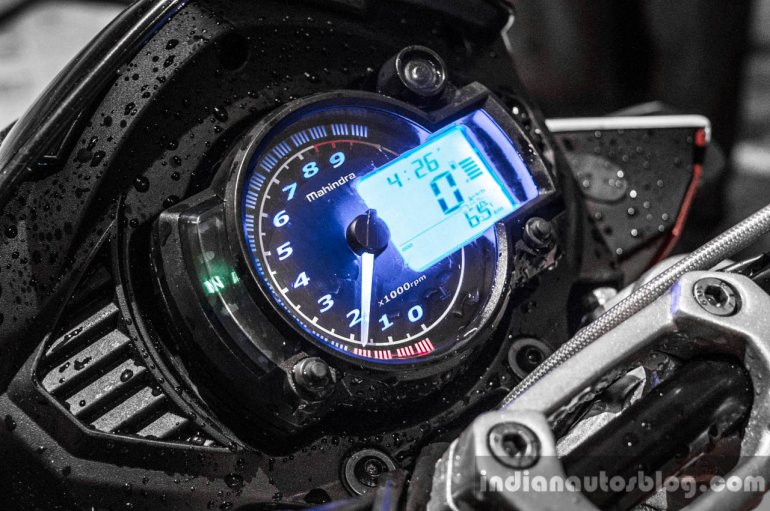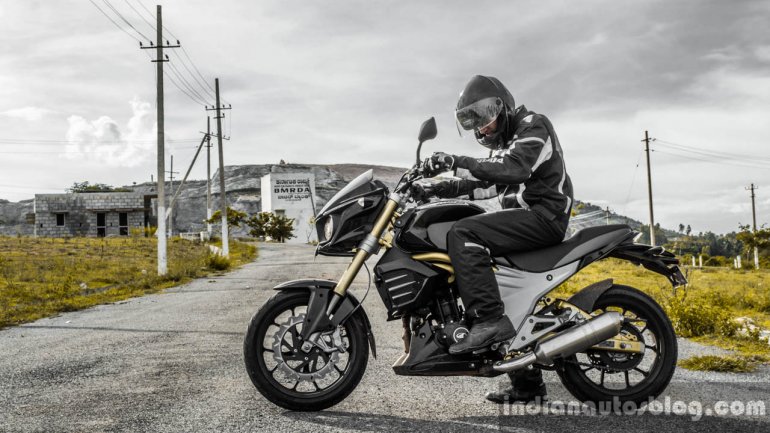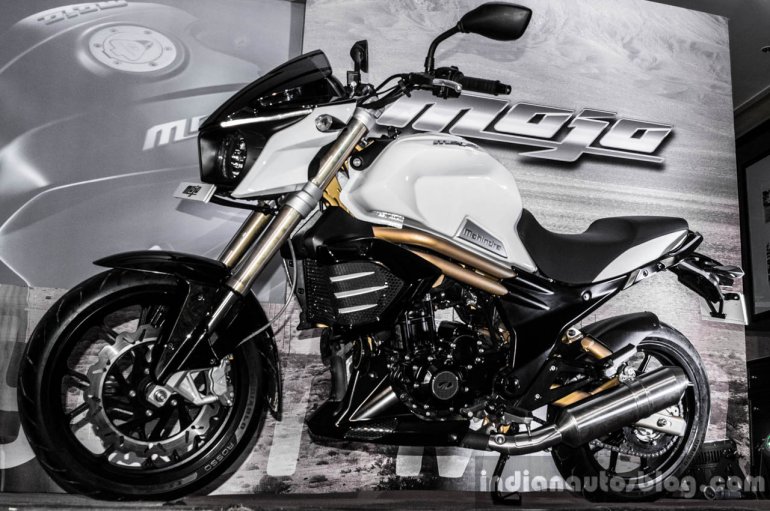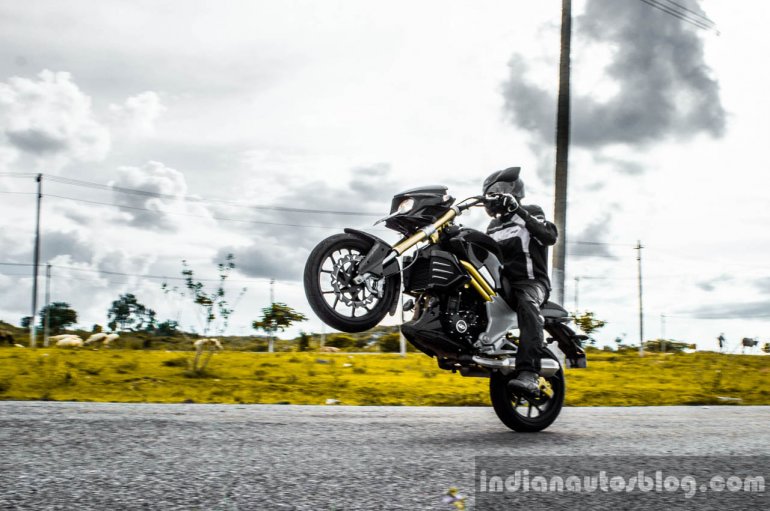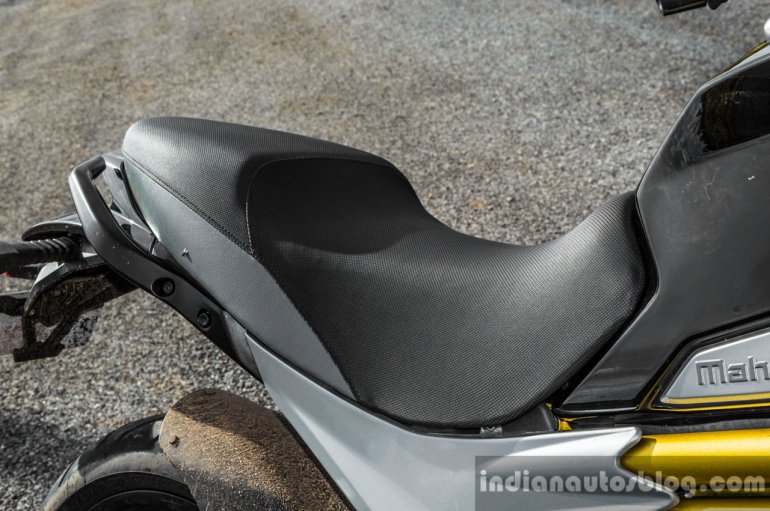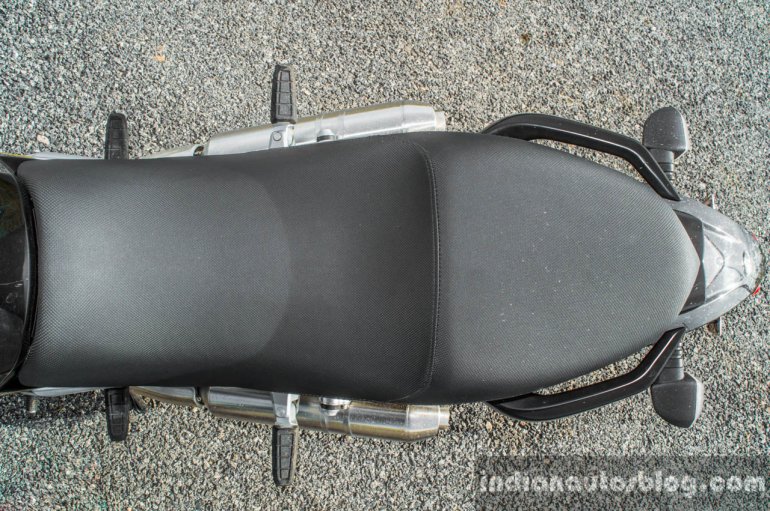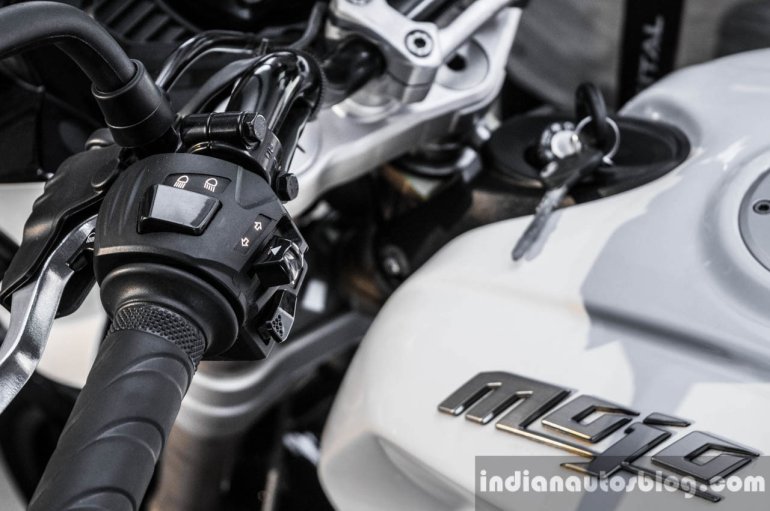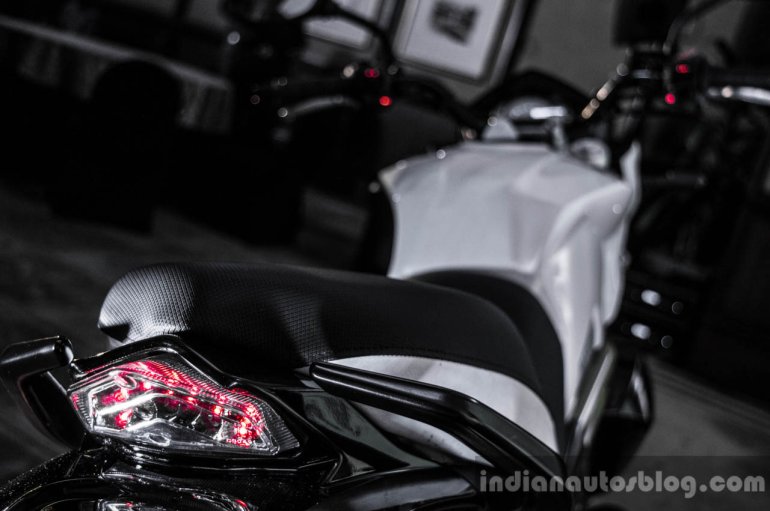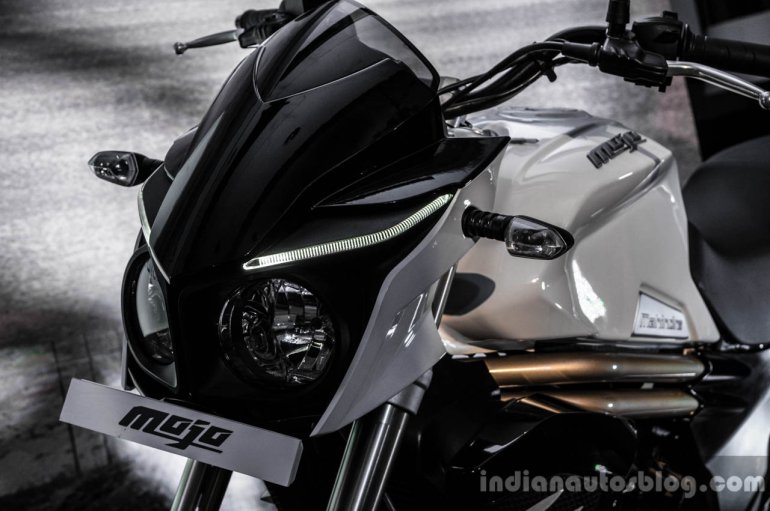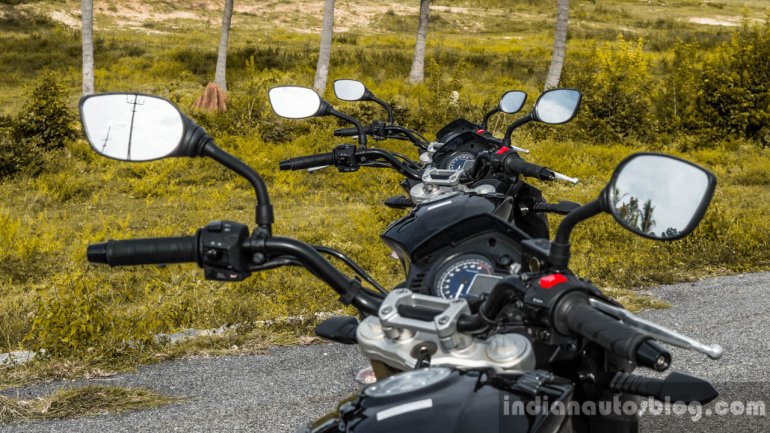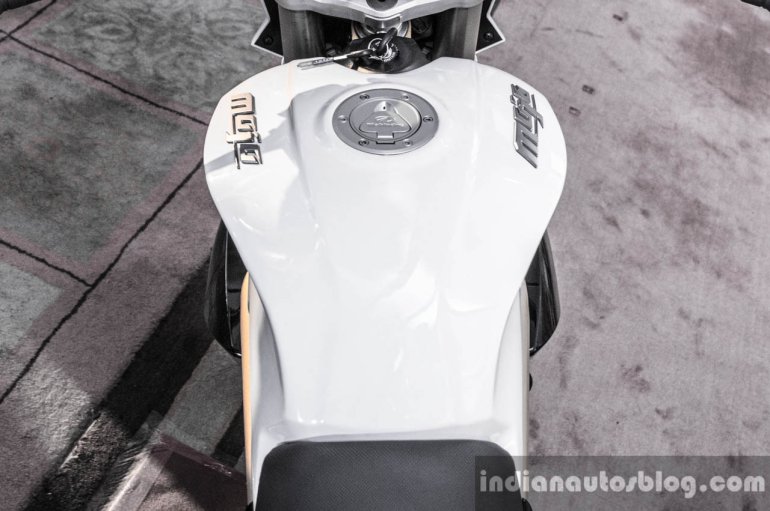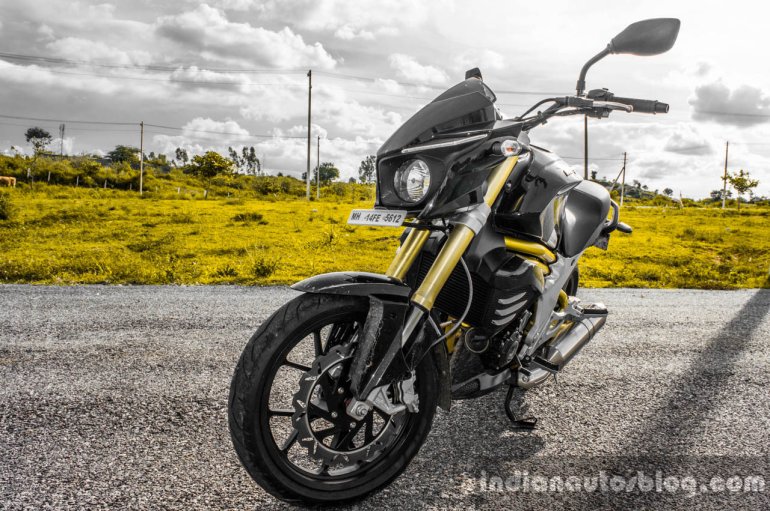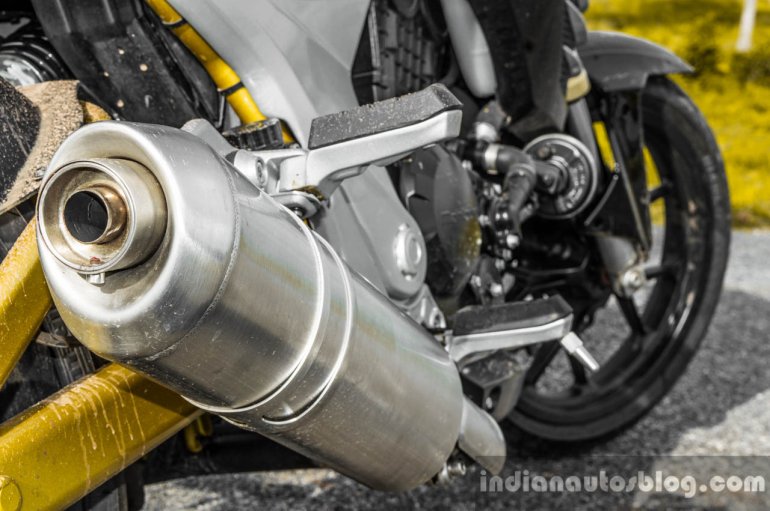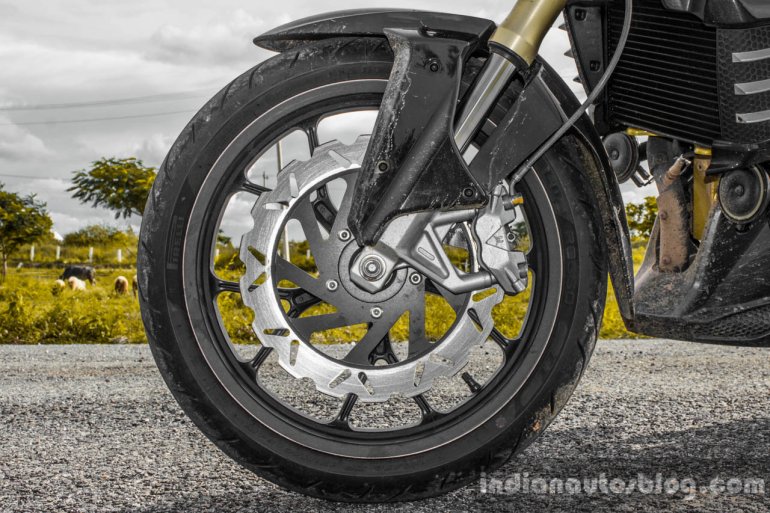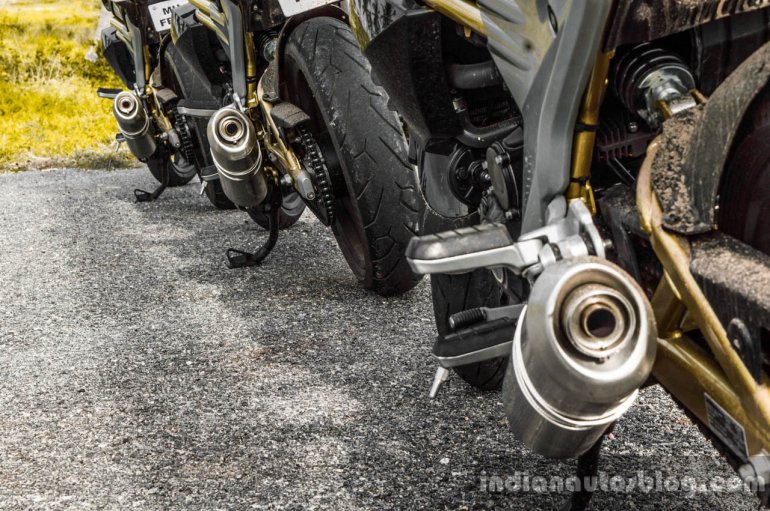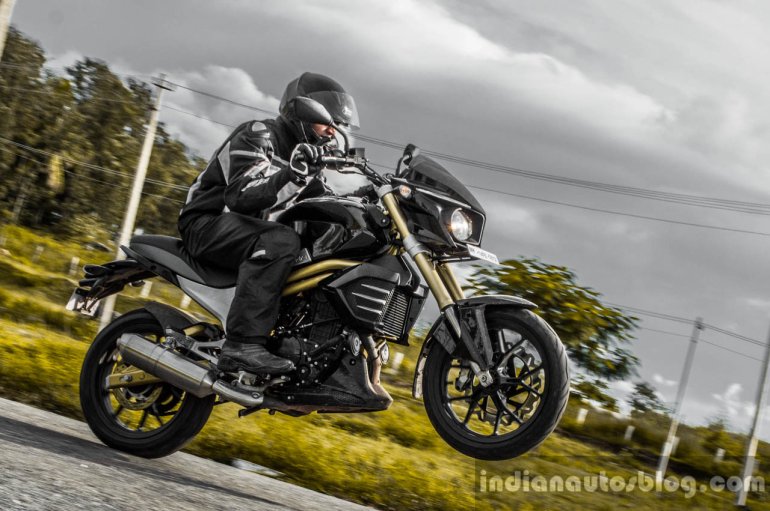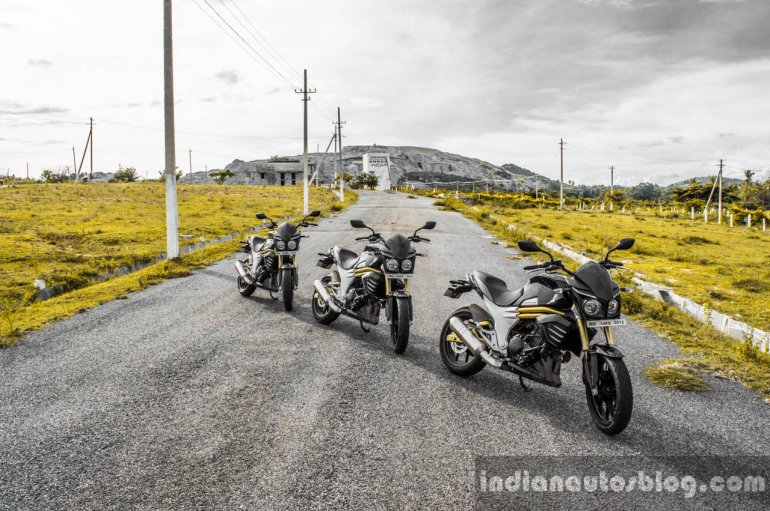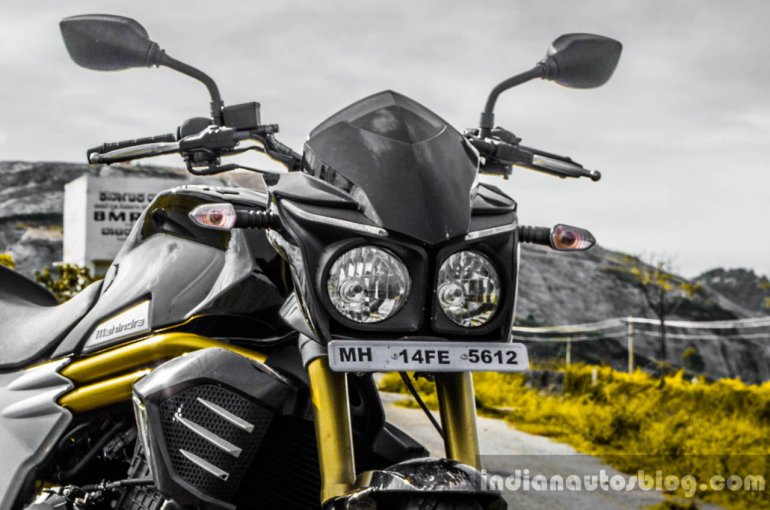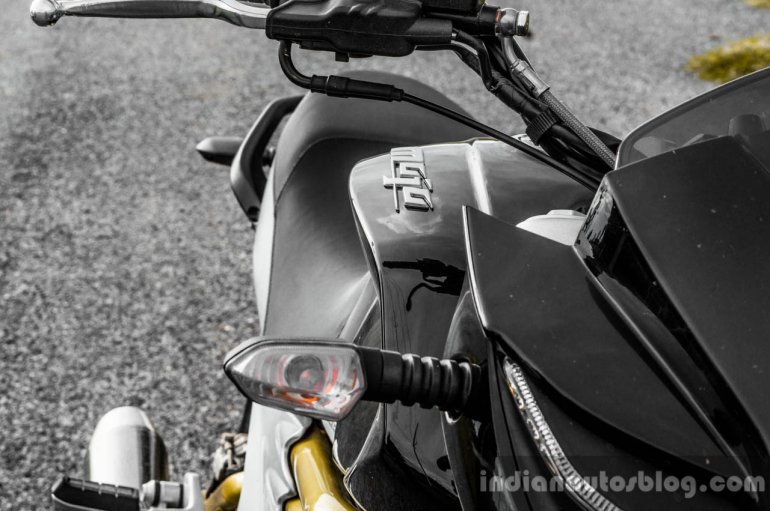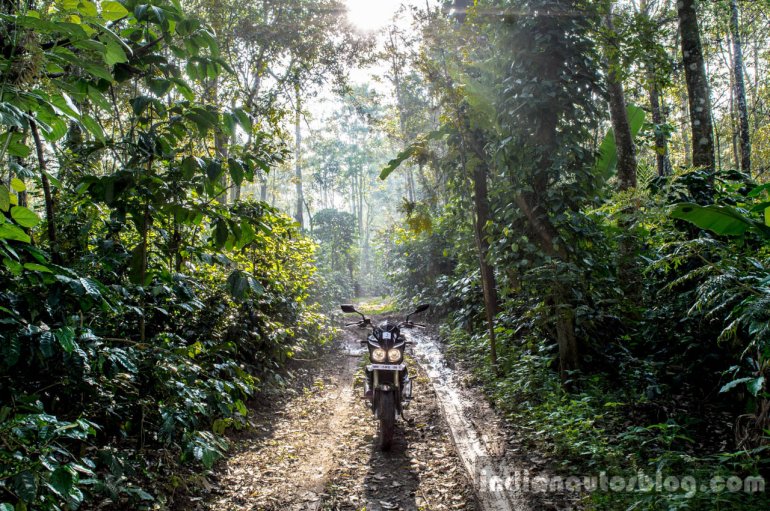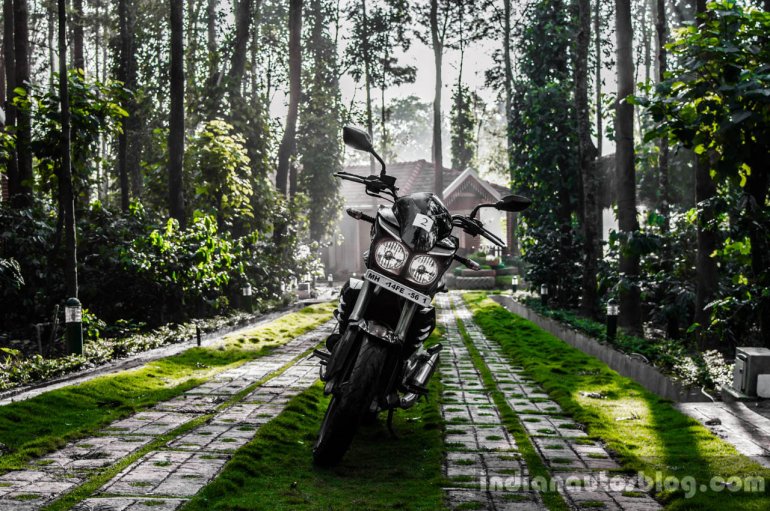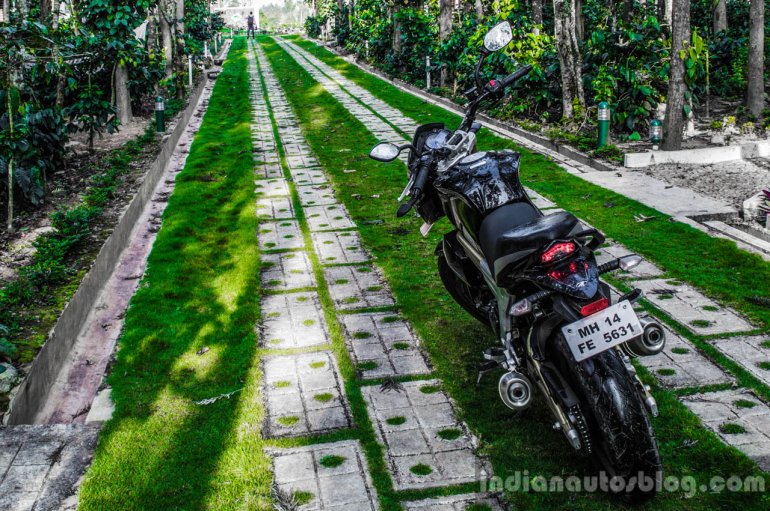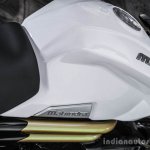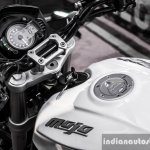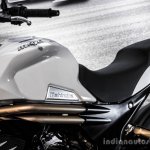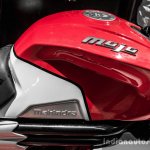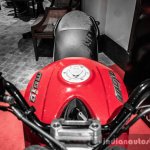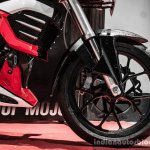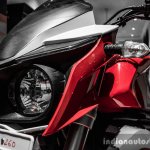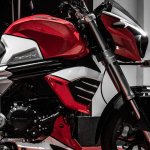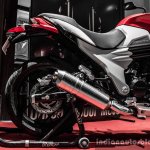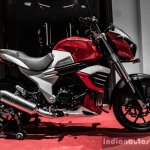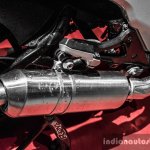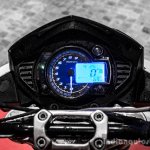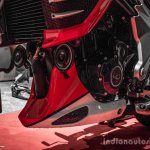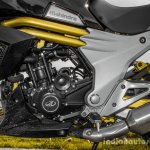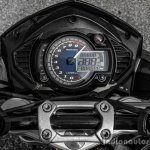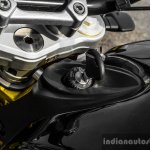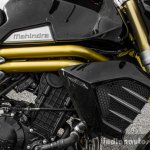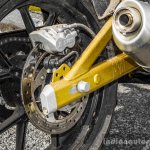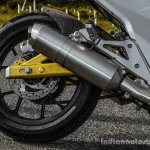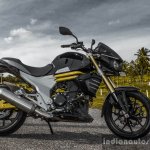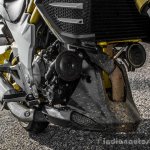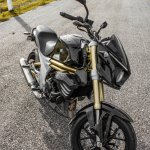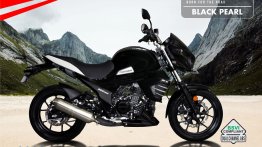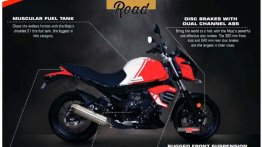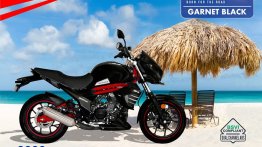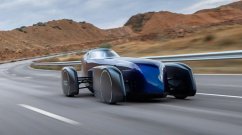A Different Ball Game
Introducing a new genre of product or being the first to launch a model in a specific segment is the clichéd success formula that applies to any type of business. However, in the current millennium, there have been numerous examples already where a first mover advantage has been squashed by a competitor with better quality and reliability, and in some cases with a finely targeted product rather than a one-size-fits-all. It is unclear if the project Mojo was drafted with the new generation business principles, but it seems to have adapted to it in the making and has come out doing just that.
The Roots Of Mahindra Mojo
Engines Engineering, an Italian motorcycle design and development consultancy, created a concept model for an Italian two-wheeler company, Malaguti. The model named "Malaguti MR250" was presented at the 2008 Tokyo Motor Show. The MR250 was a prototype powered by a two-stroke 250 cc engine that was claimed to produce 50 bhp of peak power. After the show, the motorcycle was never heard of, until Mahindra acquired the controlling stake of Engines Engineering to develop a 125 cc GP race bike, in the same year.
The MR250, which became Mahindra's asset, was reworked as the Mahindra Mojo 300, which was unveiled in 2010. The two-stroke quarter-litre engine was replaced with a 292 cc (78 mm x 61.2 mm) single-cylinder, liquid-cooled, DOHC (4 valves), fuel-injected engine from Loncin, China, which was capable of producing 19.3 kW (26.24 PS) at 8,500 rpm and 24 Nm at 7,000 rpm.
Apart from being the root of the Mahindra Mojo, the MR250 also serves as the source of the twin gold tube which the company has made its signature design element in all its motorcycles starting with the Mahindra Centuro. Unlike in the commuter on which the twin tube is merely a styling element made of plastic, the same signature element on the Mojo is an integral part of the chassis which supports the fuel tank.
Initial Response Was?
The critical reception was arguably on the unfavourable side, largely because the design that was considered awkward, but the company was appreciated for its attempt to introduce a 300 cc motorcycle in India. The 2012 Expo witnessed a slightly improved version of the Mojo, but the appeal was hardly any different to change critics' opinions.
Over the years, the project was shelved on and off as the young company wished to focus more on volume products and to establish an expansive network of sales and service centres in the country. Over the years, with some notable changes in the management and the R&D division, the project Mojo was given increasing attention, and a radically redesigned model of what used to be the Malaguti MR250 was presented as the near-production prototype of the Mahindra Mojo 300 at the 2014 Auto Expo. This model received mixed but better comments.
All About Optimisation
The components and specifications of the Mojo shown in 2014 were mostly the same as those of the initial, 2010 model, which is only slightly different from the model that has been launched this year. In other words, only the overall visual appeal and the powertrain were significantly reworked by Mahindra over these years, while the chief components and the core idea behind the motorcycle have just been optimised, not changed. This includes the twin head lamps, twin DRLs, instrument cluster, inverted fork, rear monoshock, dual exhaust, braking systems, seat structure, and the like, suggesting the kind of futuristic product Mahindra had in hand half a decade ago.
The Missed Opportunity
Meanwhile, the performance motorcycles in the 200 to 300 cc segment like the Honda CBR250R, KTM Duke and RC twins and the like utilised the vacancy in the segment that was not jumped at by Mahindra. The reason MTWL did not rush into launching the product, was the its strong intention to make it 'first time right'.
Another factor which limited the speed of the Mojo's development, was that the core people behind the project, including the R&D, marketing and management members who are the decision making authorities, were not just engineers or veterans in the two-wheeler industry, but also bikers since several years. The Mojo was not extensively tested just for compliance to engineering and market standards, but for their personal satisfaction too, from a hardcore rider's perspective that was within them. They were the first to go on a group ride on the Mojo, which was flagged off by the Group Chairman, Mr. Anand Mahindra, initiating the MojoTribe that connects all Mojo owners across the country.
The Mahindra Mojo Was Always "To Be Launched Soon"
Despite the pressure from fans and publications who have been waiting for the model's launch since the dawn of 2014, the company didn't release the Mojo until the bike was ready to take on anything the diverse Indian road and climatic conditions could challenge upon it, not to mention the limits the experienced bikers and tourers would be able to take it to.
To test and prove the latter, the Mojo was given to select riders in mid-2015 for them to take it to anywhere across the lowest and highest motorable roads in the country, in contrasting terrain and riding conditions. Among them, one rider created a record, by riding across 18 states in 18 days. All these were meticulously planned because, the Mojo was never intended to be a motorcycle for anybody's needs. It is finely finished to be a companion for a niche segment of riders who seek a feisty tourer that is blindly reliable.
This approach has been passed on to every department related to the Mojo within the company, that even test rides for prospective customers are offered as short tours during weekends, apart from getting involved with biking/riding clubs in important cities (for now) which constitute most of the prospects.
What became the Mahindra Mojo finally
The Mahindra Mojo gives a different perspective to the genus 'sports tourer', with components and characteristics that offer the qualities of a sport bike as well as a tourer. It is not a direct competitor to any of the motorcycles available in its engine displacement segment or the price range, but an alternative to the existing models for a person who commutes during weekdays and gears up during the weekends to hit the highway or the track.
The Very First Ride
The Mojo has an upright riding stance that offers a relaxed ride while slipping through metro-congestion or munching miles measuring the coastline. The motorcycle will, on first ride, feel front-heavy, the slow speed handling would seem shaky and its corner-ability would be highly doubted. The initial impressions would be puzzling for the most part. This is largely because of the really front heavy nature of the bike (for an Arabian Horse design appeal) and its super long, 1,465 mm of wheelbase, which is also why Mahindra offers long test rides for the customers to understand better if it will suit them or not.
After a considerable amount of time/miles with the Mojo, the impressions are bound to change, as the Mojo does not mimic the handling or behavior of any motorcycle, especially its perceived competitors. The Mojo is more of a get-used-to-me kind of a vehicle. In other words, it is a machine to be loved or hated, with very few people hanging between.
The Saddle Struggle
The seat however is a topic for debate. The curved saddle for the rider is something that would be luxurious only to a few. It is not as wide as expected and the inner thigh support is completely lacking as the seat tip or the fuel tank was not designed to be hugged by the thighs. The curvy cutout of the seat is maintained as the saddle height is already 814.5 mm, which is taller than most of the motorcycles out there, and the proportion is left undisturbed against comfort as it is largely responsible for the rear-end styling. There is a consolation however, that seats are easy to be customised for one's preference and it would not turn out to be expensive to do so.
Where Will She Sit?
The pillion seat too could have been improved, as it is rather short in length. The seat is something that is difficult on the Mojo to get used to, but is saved by numerous aftermarket or DIY options to make it plushier. The appreciable point about the seat, is its material that offers very good grip, and the fact that there is good room for the rider to move forward and backward.
Interactive Elements
The handlebar, the grips, the levers and the switchgear consoles are all very ergonomic and satisfying in terms of quality. The instrument cluster, which is reminiscent of the Benelli TNT 600i's unit, packs essential features like a side stand reminder, two trip meters, a clock, and a special feature that records the top speed reached until it is reset. The LED blocks that follow the tachometer needle is an impressive touch. The only downside is that the entire instrument system takes time to boot up every time the kill switch is toggled off and on. The cranking up of the engine also takes a bit of time whenever it is killed and intended to be restarted.
The Twin Focus
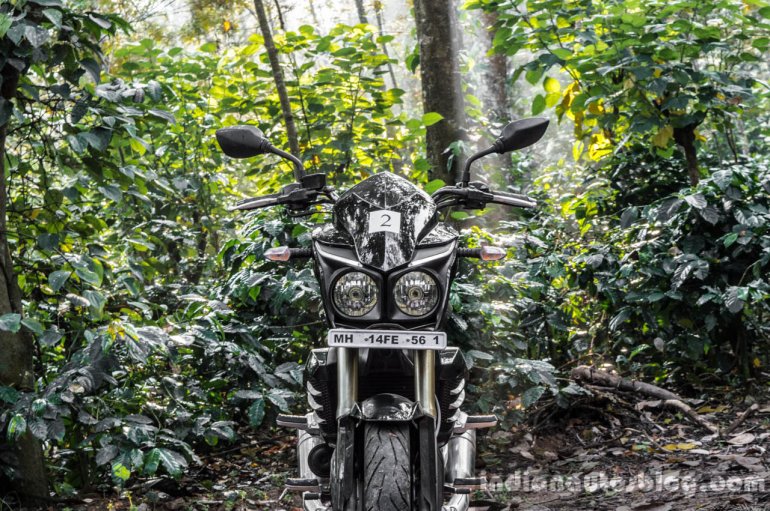
The dual head lamps are powered directly by the maintenance-free 11.2 Ah battery like most vehicles on the pricier side today, but it is electronically disabled when the engine is turned off. Only the eyebrow-lights will remain on when the engine is killed or not started. Both the headlamps and their beams (high and low) are rated at 35 Watts, which is modest for a tourer.
The spread of the headlights combined is wide on the road, both low and high beams, but during sharp turns on steep hills (ghat roads), the distance from the bike where the short range beam ends and the long range beam starts, is inadequate. At this time, the pass light need to be pressed and held, which lights up all four filaments giving a bright and wide view of the situation ahead. However this procedure is not recommended at very low speeds and for a long duration, as increased demand of power will affect the consistent functioning of the ECU, and the small head light domes would be chemically affected by the high intensity of heat.
Where's The Visor?
The almost absent visor above the head lamps serves only the purpose of styling, allowing a massive wind-blast to the rider's torso while cruising at high speeds. Mahindra officials have told IndianAutosBlog that they are working on a larger visor which will be offered as an accessory.
A Tip While Touring
For tourers on a long ride, when a back sore or a leg ache is on the rise, the motorcycle has two more positions for the rider to switch to for a short time to ease the pain, one of which is the pillion foot rest and the other is placing the heels on the radiator shrouds with toes facing outwards.
See The World Behind
The rear view mirrors are fairly large and offer a good view of what's happening right behind. Their ball-socket joints could tend to get loose over a period of off-road rides. It is fastened with three philips screws each, which can be tightened quite easily.
The Mysterious Fuel Tank
The fuel tank has a usable capacity of close to 21 litres, which the company claims to offer a range of over 600 km non-stop. The officials say that they have ridden from Leh to Manali (close to 500 km of bad roads and difficult riding conditions) on a single tank.
The entry nozzle is quite deep into the tank, which requires a vigorous shake after a seemingly full fill at about 19 litres from perceived empty, to accommodate the final 2 litres. The non-usable reserve is actually another almost-two litres.
The Over-Capable Suspension
The inverted front fork designed by Paioli of Italy, has an inner diameter of 37 mm and an outer diameter of 41 mm. The tubes, apart from being tough and capable, have room for adjustment upto 25 mm over the top-mount, which is offered in higher-end bikes with a similar Up Side Down fork arrangement. The rear monoshock can also be adjusted for softness or hardness of damping.
The overall suspension characteristics is balanced between comfort and sport riding. The ability to absorb small indentations on the road is traded for better handling at corners, which makes it as much of a sports bike as it is a tourer. The high ground clearance of 173.5 mm offers room for large hurdles to pass quietly underneath.
The Intervention While Cornering
The foot peg sliders and covers on exhaust tubes just before the cans, tend to scrape easily at while leaning into sharp turns, but according to the officials the exhaust tube covers touch the road only at around 42 degree inclination, suggesting that the bike leans more effortlessly than the rider expects it to.
Stop Right There!
The brakes are touted to be the largest in segment, with a 320 mm disc at the front and a 240 mm rotor at the rear. They are held by a four-piston radial and a two-piston floating caliper respectively, both from J.Juan, Spain. The front brake does not bite as instantly as expected, but a forcible press does get the bike to halt as intended. This is largely due to the more than conventional height of the fork (that has 143.5 mm of travel, 0.5 mm more than the monoshock). The rear brake, on the other hand, is highly responsive and locks up very easily. It needs to be handled with caution even on dry roads.
Double The Thud
The dual exhaust is admitted by the company to be more of a style statement than a functional requirement. However, the officials did mention that two outlet streams from the muffler did help them in many ways to improve the engine, emission and NVH characteristics. The exhaust note is arguably the sportiest.
Gluey At All Times
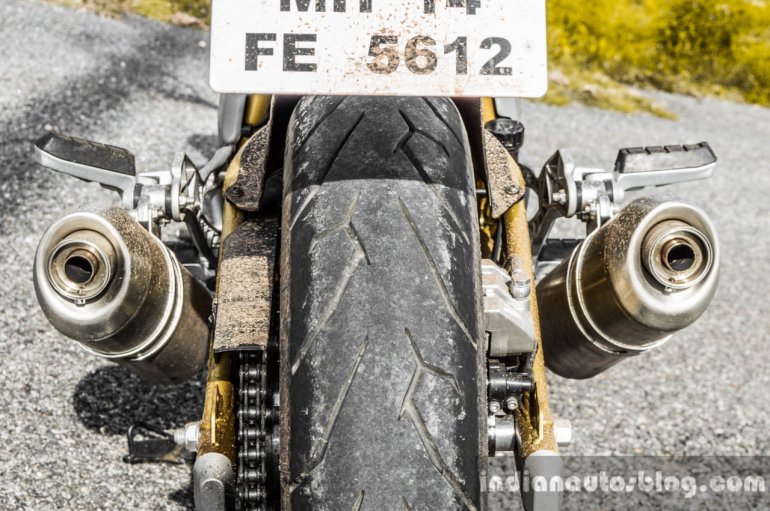
The tyres, which were initially Pirelli Sport Demons when the Mojo was showcased at the 2014 Auto Expo, are now Pirelli Diablo Rosso II, which is found in KTM Duke 390 in Europe and in superbikes like Ducati. The sizes are 110/70-ZR17 M/C 54W at the front and 150/60-ZR17 M/C 66W at the rear. They are very grippy on dry and wet roads, and contribute greatly to the nimbleness of the Mojo despite its kerb weight of 165 kg. The officials claim that these soft compound tyres will last for at least 13,000 km of combined - city and highway usage.
Promise Of Head Start
At the heart of the Mahindra Mojo, is the 294.72 cc (76 mm x 65 mm) single-cylinder, liquid-cooled, fuel-injected engine that produces 27.19 PS (20 KW) of maximum power at 8,000 rpm and 30 Nm of peak torque at 6,000 rpm, mated to a 6-speed gearbox. The engine is highly responsive and becomes eager to rev once it crosses roughly 5,000 rpm, all the way up until the rev-limited kicks in. An R&D official has said that the torque curve remains flat for around 2,000 rpm after the peak torque is achieved, which sustains the blasting acceleration effect until the peak power is reached.
Split Personality
In the city, the sub-5,000 rpm band which is mostly used, is lively enough to tackle its way through traffic. On the highway when the other side of the tachometer is lit up, the machine becomes more of a racer than a cruiser. A truck carrying a wind mill blade could be sent from visor view to the rear view mirror in a jiffy. The red line is marked at as low as 8,500 rpm and the rev-limiter intervenes at around 9,400 rpm, which is a phenomenon not usually seen. The in-gear acceleration is sporty until the fifth gear, which is already at overdrive, and the sixth gear is solely for hitting the top speed after redlining on the fifth or for cruising with a better fuel economy. The sixth gear gear ratio is close to 0.89.
Perpetually Powerful
Throughout the riding experience on the Mahindra Mojo, one would not miss the fact that the engine remains considerably smooth and it never feels tired. Its engine is something that would be unanimously praised. The transmission is cleverly designed for sporty riding as well as an economical one, but the gear shift quality could be fractionally better. The mileage claim is around 30 km/l inside city and up to 35 km/l on the highway. At sixth gear, the 100 km/h cruising speed is reached at around 5,500 rpm, which is appreciable and it makes the mileage claim plausible. The engine oil used is 10W50 4T from Castrol.
Post-purchase economics
Understanding that the customers of a performance motorcycle generally worry a lot about maintenance costs, Mahindra has priced the spare parts affordably. For instance, the Iridium spark plugs which is said to last upto 25,000 km is priced at around INR 128, the sintered disc brake pads for front brake which is also said to last up to 25,000 km is priced close to INR 1,500, the chain and sprocket set is priced around INR 1,600, the Pirelli Diablo Rosso II front tyre is priced around INR 5,000 and the rear tyre is priced around INR 6,000.
Stranded In The Middle Of Nowhere?
The company offers a Road Side Assistance package, which has been offered for free for the first 100 customers valid for 2 years, covering the entire nation. Wherever the bike stops for any reason, the company can be contacted via a hotline number and assistance will arrive from any of the Mahindra's auto division touch points.
What Next?
The ABS version of the Mahindra Mojo is planned to be launched around April 2016, as revealed to IndianAutosBlog by a senior executive. Post which the company will start exporting the Mojo to various markets including South America.
The End
It can be concluded that Mahindra's attempt to trade the first mover advantage to improve the maturity and finesse of the Mojo has worked in their favour at least in the initial stage. It is yet to be seen if the market, the Mojo's finely picked target audience, align to the same rhythm.
